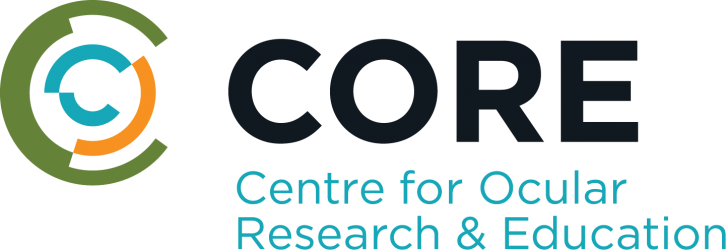Publications
Showing 25 results out of 126 in total.
Guthrie,S., Luensmann,D., Schulze,M., Woods,J., Jones,L.
Investigation of Delefilcon A Contact Lenses for Symptomatic Daily Disposable Contact Lens Wearers with Dry Eye Disease: A Prospective Comparative Study
Clinical Ophthalmology 2024;18(October):2999-3008 [ Show Abstract ]
Purpose: This prospective comparative study aimed to assess the effects on contact lens comfort, dryness, and wear time when symptomatic daily disposable (DD) contact lens (CL) wearers were refit with delefilcon A (DT1) lenses.
Patients and methods: Thirty five symptomatic DD CL wearers with dry eye disease as determined according to the TFOS DEWS 2 guidelines, were enrolled and completed the study. Participants wore their habitual DD CLs during an initial assessment and were subsequently refit with DT1 for one month. Participants were masked to the study lens type. Subjective ratings of end-of-day comfort and dryness, average wear time, and comfortable wear time were evaluated as primary endpoints.
Results: Of the 35 participants, two participants were classified as aqueous deficient dry eye, while the remaining participants exhibited symptoms primarily due to evaporative causes. The median CLDEQ-8 score for dryness significantly improved from 17 (fair) with habitual lenses to 13 (good) with DT1 lenses (p<0.01). Participants reported significantly better end-of-day comfort (p=0.01) and less end of day dryness (p=0.01) with DT1 compared to their habitual DD lenses. The comfortable wear time was significantly longer with DT1 (8.5 ± 4.1 hours) compared to habitual DD lenses (6.7 ± 3.2 hours) (p=0.04). No significant differences were observed in vision ratings (p=0.07).
Conclusion: Refitting symptomatic DD CL wearers with DT1 resulted in improved end-of-day comfort, reduced end-of-day dryness, and extended comfortable wear time compared to their habitual lenses. These findings suggest that DT1 may offer benefits for symptomatic DD wearers with dry eye disease.
Ho B, Phan CM, Garg P, Shokrollahi P, Jones L. A screening platform for simultaneous evaluation of biodegradation and therapeutic release from an ocular hydrogel and its effect on human corneal epithelial cells The Association for Research in Vision and Ophthalmology, Seattle, WA, May 7, 2024 [ Show Abstract ][ PDF ]
Purpose: To integrate human corneal epithelial cells (HCECs) into a millifluidic screening platform that quantifies biodegradation and release of an entrapped therapeutic from an ocular hydrogel.
Introduction: Biodegradable hydrogels are novel drug delivery methods designed to release entrapped drugs or therapeutics as the gel degrades in situ. The primary challenge in developing biodegradable hydrogels for drug delivery lies in accurately measuring their degradation over time, while simultaneously being able to evaluate the drug release kinetics, which is typically a cumbersome procedure. To properly evaluate the biodegradation of a hydrogel, it is also essential to simulate key factors of the target tissue environment. In the context of the eye, this includes ocular temperature, tear flow, and low tear volume. Recent advances in organ-on-a-chip technologies have made it possible to emulate the human corneal environment. This will allow more accurate measurements of hydrogel degradation rates, subsequent drug or therapeutic release, and ultimately the overall effect on human corneal epithelial cells.
Methods: Gelatin Methacrylate (GelMA) ocular inserts with polyvinyl alcohol (PVA) (10% GelMA 7.5% PVA) were placed inside a custom-designed millifluidic device. Ocular inserts were degraded with up to 200 μg/mL of matrix metallipeptidase 9 (MMP9) for 24 hours at 37oC in PBS. Biodegradation of the ocular insert was quantified using a computational image analysis pipeline. The eluates containing the degradation products were collected to measure PVA released using a spectrophotometric assay, and its toxicity on human corneal epithelial cells (HCECs) was determined by alamarBlueTM assays.
Results: There was significant biodegradation of the GelMA-PVA inserts with increasing concentration of MMP9 in the millifluidic device, which was accurately quantified using a custom computational analysis. Degradation products in the eluate were collected, and there was a ~2-fold increase of PVA released in samples treated with MMP9 compared to the control. The same eluates were non-toxic to HCECs, and interestingly protected HCECs from hyperosmotic conditions mimicking dry eye disease.
Ho B, Phan CM, Jones L, Hui A, Ketelson H. Evaluating Protective Effects of Hyaluronic Acid Containing Ophthalmic Lubricants on an in Vitro Dry Eye Model American Academy of Optometry Meeting, Indianapolis, Nov 6, 2024 [ Show Abstract ]
Purpose: To evaluate the protective effects of hyaluronic acid (HA) with the actives glycerin and polyethylene glycol/propylene glycol in ophthalmic lubricants on an in vitro model for dry eyes.
Methods: Three different topical formulations ((non-HA) containing the active hydroxyethyl cellulose, Optase® Dry Eye Intense (OI) containing the active glycerin and Systane® Hydration (SH)) containing the actives polyethylene glycol/propylene glycol were tested. The OI eye drops contained a single high MW HA polymer whereas the SH formulation contained a dual polymer system of HA and hydroxypropyl guar. The in vitro cell model consisted of immortalized human corneal epithelial cells (HCECs) cultured in DMEM/F12 media with 1% FBS and 1% penicillin/streptomycin. HCECs were seeded into 96-well plates at a density of 15,000 cells/well and incubated for 16 hr at 37°C and 5% CO2. Once confluent, media was aspirated, and HCECs were treated with HA and non-HA-based formulations for 30 min and imaged every min by brightfield microscopy. The formulations were removed, and HCECs were washed with 100 µL of PBS 0-3 times to simulate removal of the formulation from the ocular surface by tear dilution. Cells were then exposed to a dry eye environment by completely removing media for 90 seconds. Morphology changes were observed by time-lapse microscopy, and HCEC viability was determined using alamarBlueTM.
Results: There was a significant reduction in cell viability to 78% (Fig 1A) for cells desiccated in the PBS control condition (p < 0.05, two-tailed T-test). Treatment with the non-HA eyedrop showed no protection of cell viability. HA-containing formulations protected HCECs from desiccation by 98-99% (Fig 1B) compared to respective controls (p < 0.05, two-tailed T-test). This protection was maintained after multiple PBS washes. Despite the SH formulation containing two polymers, the OI treatment showed similar levels of protection against desiccation. However, the OI and SH formulations resulted in different cell morphologies. Under desiccation stress, the morphology of HCECs changed from elongated to a rounded shape (Fig 1C). HCECs treated with OI remained elongated whereas cells in SH were more circular.
Conclusion: This study utilized an in vitro dry eye cell model to evaluate the effects of HA with the actives glycerin and polyethylene glycol/propylene glycol in topical ophthalmic eye drops. Formulations containing HA protected against dry eye conditions, yet those without HA did not. HA also maintained more durable protection when exposed to rinsing mechanisms. Interestingly, protection levels may differ between different formulations of HA with the various actives when based on changes in cell morphology, warranting further investigation to identify HAs with optimal properties for ocular benefits.
Hui A. Research Review - Anti-inflammatory therapy in CLD Contact Lens Spectrum 2024;39, June: 6
Hui A. Interactions of Contact Lenses with Preservatives Contact Lens Spectrum 2024;39, January:
Hui A. Not a Dry Eye in the House: An Overview of New Drugs https://contactlensupdate.com/2024/04/16/not-a-dry-eye-in-the-house-an-overview-of-new-drugs/ 2024, 77:
Hui A, Jones L. The Science behind Lens Care Contact Lens Spectrum 2024;39, November: 17-22
Jabeen A, Luensmann D, Woods J, Hill J, Jones L. Short-term effect of DOT spectacle lenses on choroidal thickness in emmetropic children The Association for Research in Vision and Ophthalmology, Seattle, WA, May 9, 2024 [ Show Abstract ][ PDF ]
Purpose: To investigate regional changes in choroidal thickness (ChT) following short-term wear of Diffusion Optics Technology™ (DOT) spectacle lenses, designed to control myopia by lowering retinal contrast.
Method: Emmetropic children (SER +1.00 to -0.75 D) aged 8 to 14 years wore plano DOT spectacle lenses without central apertures and +3.00D spectacle lenses in a two-visit, prospective, randomized, subject-masked crossover study. High-resolution OCT (Triton DRI-OCT, Topcon) evaluated central, parafoveal (3 mm from the fovea) and perifoveal (6 mm from the fovea) ChT after 0, 30 and 60 minutes of viewing a high contrast video at each visit.
Results: A total of 30 participants (17F, 13M) with a mean (± SD) age of 10.9 (1.7) years completed the study. After 30 minutes of spectacle lens wear, a significant increase in ChT was observed with DOT spectacle lenses compared to +3.00D spectacle lenses in 4 of the 9 macula regions evaluated (p<0.05 for all). DOT spectacles showed a significant ChT thickening in the central (+7.69 ± 4.19 μm), parafoveal regions at nasal (+9.01 ± 2.77 μm) and temporal (+6.20 ± 5.46 μm) and inferior perifoveal (+9.79 ± 2.31 μm) compared to myopic defocus with +3.00D lenses. After 60 minutes, ChT remained higher only in the inferior parafoveal region (+3.96 ± 8.33 μm, p=0.03), while all other regions returned to baseline levels.
Conclusion: After short-term DOT spectacle lens wear, emmetropic children experienced macula ChT thickening, similar or greater than the response observed with +3.00D spectacle lens wear. These results indicate the choroid is able to respond to contrast reduction. Further research is required to investigate the long-term impact of contrast modulation on ChT.
Jabeen,A., Luensmann,D., Woods,J., Hill,J., Jones,L.
Evaluation of Lag of Accommodation with Full-Field Diffusion Optics Technology™ (DOT) Contrast Management Spectacle Lenses in Emmetropic Children
Clinical Ophthalmology 2024;18(May):1181-1190 [ Show Abstract ]
Purpose: To evaluate the impact on the lag of accommodation (LOA) in emmetropic children after short-term wear of full-field Diffusion Optics TechnologyTM (DOT) spectacle lenses, designed to modulate retinal contrast to control myopia progression.
Patients and methods: This was a single-visit, prospective, randomized, subject-masked study of emmetropes (ametropes ±1.00D or less in each meridian) with no history of myopia control treatment. Unaided logMAR visual acuity was measured, and ocular dominance was determined using the sighting method. In a randomized order, participants wore plano full-field contrast management (DOT) spectacles (no clear central aperture) or control spectacles (standard single vision spectacle lenses). Each participant was given 5 minutes for adaptation to the respective lenses before open field autorefraction measurements were taken at 6 meters and 40 cm. Ten measurements were taken for each eye. Data were evaluated from the right eye and the dominant eye separately.
Results: A total of 30 participants (20 females and 10 males) with a mean age of 10.4 ± 2.8 (7 to 17) years completed the study. There was no significant difference in right eye mean LOA with contrast management spectacles 0.57 ± 0.39D versus control spectacles 0.62 ± 0.34D; Wilcoxon test, p = 0.37. For dominant eyes, LOA values were 0.60 ± 0.40D and 0.68 ± 0.33D with contrast management spectacles and control spectacles, respectively (p = 0.14). Additionally, no significant difference was observed in mean LOA between males and females or between age groups (7-11 years vs 12-17 years) for either right or dominant eyes with contrast management or control spectacles (all p > 0.05).
Conclusion: Full-field contrast management spectacle lenses had no significant effect on LOA compared to standard single vision spectacle lenses, indicating no differential impact on accommodative response over the short period of lens wear tested.
Jin,Y., Minten,C., Jenkins,M., Jones,L., Gorbet,M.
Investigation of the rhythmic recruitment of tear neutrophils to the ocular surface and their phenotypes
Scientific Reports 2024;147061 [ Show Abstract ]
Hundreds of thousands of polymorphonuclear neutrophils (PMNs) are collected from the ocular surface upon waking, while few are harvested during daytime. This study aimed to investigate potential factors contributing to the circadian infiltration of tear PMNs, including changes in IL-8 and C5a in tears, and their phenotypes across different time points in a 24-h cycle. Tear PMNs were collected using a gentle eyewash after 2-h and 7-h of sleep (eye closure, EC) at night, after 2-h EC during the day, and towards the end of the afternoon. Significantly fewer cells were collected after 2-h EC during the day compared to 2-h EC at night. A positive correlation between IL-8 and PMN numbers existed, but not with C5a. Tear PMNs collected after 2-h EC at night were less degranulated and possessed a larger activation potential compared to 7-h EC. Tear PMNs from 7-h EC at night exhibited hyper-segmented nuclei and more NETosis compared to 2 h EC night, indicating an aged and activated phenotype. The diurnal-nocturnal recruitment pattern of tear PMNs may be driven by increased IL-8 in nighttime tears. Higher degranulation and NETs point to the significant activation of tear PMNs on the ocular surface during prolonged eye closure at night.
Jones D. Instruments and diagnostics - IMI review International Myopia Conference, Sanya, Hainan, China, Sep 27 , 2024
Jones D. Confidence in Practice – Your Myopic Patients Deserve the Best Care Webinar: https://cybersight.org/library/lecture-confidence-in-practice-your-myopic-patients-deserve-the-best-care/ Oct 17, 2024 [ Show Abstract ]
During this live webinar, we will discuss the main myopia control modalities, emphasizing factors influencing the choice of modality, and detail the necessary instrumentation for successful myopia management. The webinar will cover identifying at-risk patients, determining the right time to start and stop myopia control, and managing patient and parent expectations. The webinar is designed for both novice and experienced practitioners in myopia control. (Level: All)
Jones D, Guthrie S, Acs M, Caffery B, Di Marco A, Fromstein S, Pal S, Ramdass S, Thakrar V, Zeidenberg M, Chow A. Initial Clinical Management of Myopic and Pre-Myopic Patients in Ontario, Canada – how has this changed over time? International Myopia Conference, Sanya, Hainan, China, Sep 25 , 2024 [ Show Abstract ]
Purpose: To determine how optometrists in Ontario, Canada are changing their management of myopic and pre-myopic pediatric patients at their initial visit over time
Methods: In a retrospective chart review, charts for 2920 patients aged 6-10 with presenting refraction of ≤-0.50D (myopes) or ≤ +0.75D (pre-myopes) were reviewed. All patients had eye examinations between 2017-2021 at optometry practices in Ontario. A maximum of five unique charts were selected for each age (6, 7, 8, 9, 10) and visit year (2017 to 2021) for each group (myopes, pre-myopes), for up to 250 files per practice. Demographic information, refraction and recommended interventions (categorized as standard myopia correction with single vision (SV) spectacles or contact lenses; myopia control treatment with myopia control spectacles or contact lenses, ortho-K, atropine, bifocals/progressives; and lifestyle changes (increasing outdoor time and reducing screen time)) were recorded. A two-way ANOVA with post-hoc Bonferroni-corrected t-tests were used to determine whether visit year and discussion type differed across myopic and pre-myopic groups at their initial visit.
Results: Optometrists in Ontario, predominantly recommended SV spectacles at the initial visit across the 5 years (89.56% in 2017 to 48.88% in 2021), some optometrists increased the incorporation of myopia control treatments in their discussions over time (increasing from 8.84% in 2017 to 44.84% in 2021, F2,8=31.33, p=0.0002). Patients recommended myopia control are on average 0.58D more myopic than those prescribed standard myopia correction (mean spherical equivalent standard error for myopia control treatment -1.890.09 DS vs standard myopia correction -1.310.05 DS, F1,1147 = 62.08, p0.05). 95% of optometrists monitor pre-myopic children with no treatment. A small group of optometrists, 0.85%, prescribed bifocals/progressives as an attempt at preventative myopia control, the sole modality employed. Awareness of parental history of myopia increased the likelihood of discussing myopia control with myopic patients (2.63x more likely if one parent was myopic and 4.68x more likely if both parents were myopic). Age and gender did not appear to be factors impacting recommendations for myopia control or lifestyle changes, this was unchanged over the years.
Conclusions
While optometrists in Canada are increasingly integrating evidence-based practices in the clinical management in myopic children and children at risk of myopia, this study reveals knowledge gaps that should be the focus of continuing education programs. Recommendations include: initiating myopia control earlier instead of waiting for further progression of myopic refractive error and discussing lifestyle changes with pre-myopic children for optimal efficacy in delaying the onset of myopia.
Jones D, MacNeil C, Pal S, Weinstein M.. 3 Min, 49 Sec Video: How Do You Communicate to Kids & Parents as a Team?
Review of Optometric Business 2024, February: Video series - Part 4
Jones D, Thakrar V. Myopia Management - So Many Options, How Do You Choose American Academy of Optometry Meeting, Indianapolis, Nov 7, 2024
Jones D, Woods J. Myopia Control: Do the Benefits Outweigh the Risks? American Academy of Optometry Meeting, Indianapolis, Nov 9, 2024
Jones L. New materials and emerging techniques Minisymposium: Contact lens is not a piece of plastic: Back to the future. The Association for Research in Vision and Ophthalmology, Seattle, WA, May 8, 2024 [ Show Abstract ]
Recent advancement and diversification in contact lenses are remarkable. Today, contact lenses are not merely correcting tools for refractive errors, but can be used as therapeutic modalities for various diseases. With new materials and technologies entering the market, several options, such as lenses with internal wetting agents and silicone hydrogel lenses, have become available for wearers seeking relief from contact lens discomfort. Custom-made contact lenses can address irregular astigmatism and improve the vision in eyes with irregular corneas. Myopia has become increasingly prevalent worldwide over the past century. Contact lenses such as orthokeratology lenses or multifocal soft contact lenses are commonly used for myopia control. Numerous studies and clinical experience show that we can prescribe interventions that significantly slow the rate of myopia progression. Contact lenses can be used as biosensors and medication depots. Intraocular pressure monitoring is essential in the diagnosis and management of glaucoma patients. Currently, continuous ocular monitoring contact lens sensor is available in clinical use, which helps clinicians personalize glaucoma treatment according to the patients intraocular pressure profiles. Drug-eluting contact lenses can be used for ocular drug delivery with widespread therapeutic applications. Future development of both types of lenses are of great interest. This symposium will cover some of the hottest topics in contact lenses today. Attendees will learn about exciting new lens technologies and how these lenses can help their patients.
Jones L. The future of frequent replacement silicone hydrogels Alcon Innovation Meeting, Ft Worth, Texas, April 22, 2024
Jones L. Contact lens comfort: Inevitable or manageable? ECLSO, Istanbul, Turkey, April 26, 2024
Jones L. The battle against contact lens discomfort and dropout Alcon Lecture Series, Ft Worth, Texas, USA, May 14, 2024
Jones L. Everything you wanted to know about contact lens care but were afraid to ask! Ophtecs Event, Coventry, UK, Jun 4, 2024
Jones L. Everything you wanted to know about contact lens care but were afraid to ask! Ophtecs Event, London, UK, Jun 5, 2024
Jones L. Dry eye and contact lenses: Harmony or havoc? GrandVision on-line webinar (Europe), Jun 10, 2024
Jones L. Opportunity, opportunity, opportunity. Alcon Sales Force presentation, Waterloo, Canada, Jun 12, 2024
Jones L. Contact Lens Research around the World - Update on Contact Lens Care The 66th Annual Meeting of the Japan Contact Lens Society, Tokyo, Japan, Jul 14, 2024 [ Show Abstract ]
Despite the growing use of daily disposable lenses, analysis of the contact lens market suggests that some 50% of the lenses fitted globally are reusable, necessitating the use of contact lens solutions. Over the past 30 years the development of contact lens solutions has shown tremendous changes, with products becoming increasingly complex and diverse in their composition and performance. To many practitioners and patients, contact lens solutions appear relatively similar in their composition, resulting in many choosing to change between products on a whim, often driven by cost considerations rather than sound clinical or scientific acumen.
This presentation will briefly review the major components of care regimens and investigate the importance of cleaning, wetting and compatibility when choosing a modern care regimen. Of particular note are updates on biocides to produce a broader spectrum of disinfection and reduce biofilm formation, along with novel wetting agents, particularly those which can enhance wettability of silicone hydrogel materials. It will emphasise up-to date results to help clinicians understand the importance of choosing a solution – rather than letting the patient choose the solution themselves.





